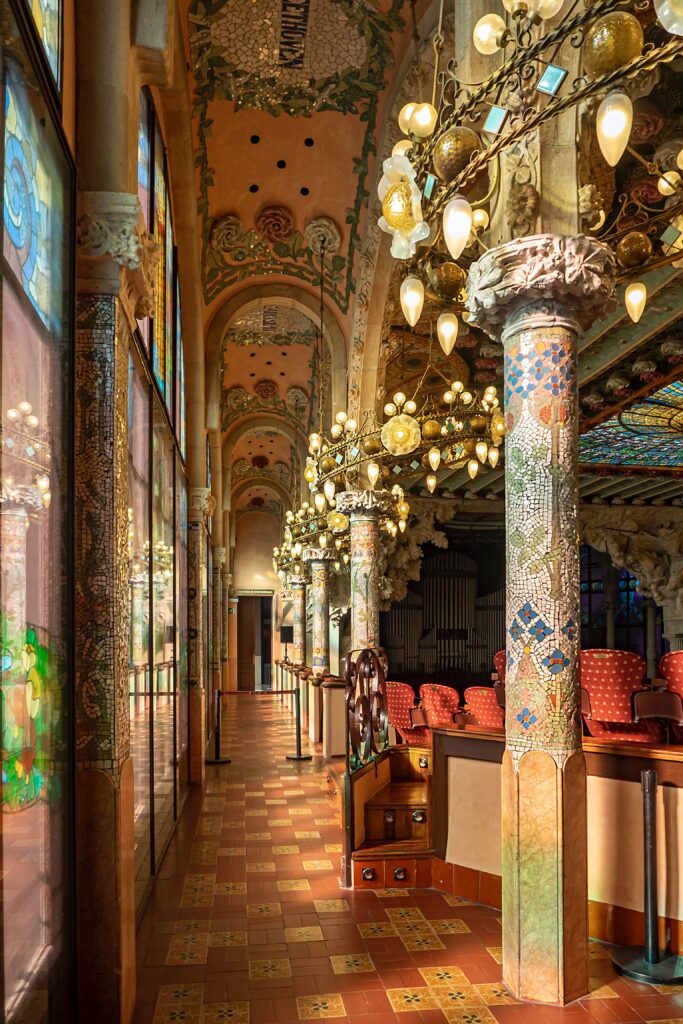The Palau de la Música Catalana offers a unique fusion of traditional and modernist architecture. It is a must-see UNESCO World Heritage Site.
Nestled in the charming Sant Pere district of Barcelona, the Palau de la Música Catalana stands as a testament to the ingenuity of modernist architect Lluís Domènech i Montaner.
The building was constructed between 1905 and 1908 and was meant as a home for the choral society Orfeó Català. This architectural marvel was funded through popular subscription, embodying the collective spirit of Catalonia.

A UNESCO World Heritage Site
In 1997, the Palau de la Música Catalana was designated as a UNESCO World Heritage Site, not just because of its architectural excellence but also symbolizes the emotional and social heritage of the people it represents. The Palau is more than just a concert venue; it is a cultural icon that pulsates with the heartbeat of Catalan Art Nouveau.
Its innovative approach to space and integration of industrial-era technology is what truly sets the Palau de la Música Catalana apart. Lluís Domènech i Montaner used a then-revolutionary reticular steel frame, which allowed for expansive open floor plans and the seamless integration of interior and exterior spaces. Natural light floods the interior, enhancing the sensory experience for visitors and performers alike.
All things considered, the Palau de la Música Catalana is more than just a building; it’s a living testament to the resilience and creativity of the Catalan people. It serves as a beacon of inspiration for generations to come, reminding us of the power of art to transcend boundaries and unite communities.





